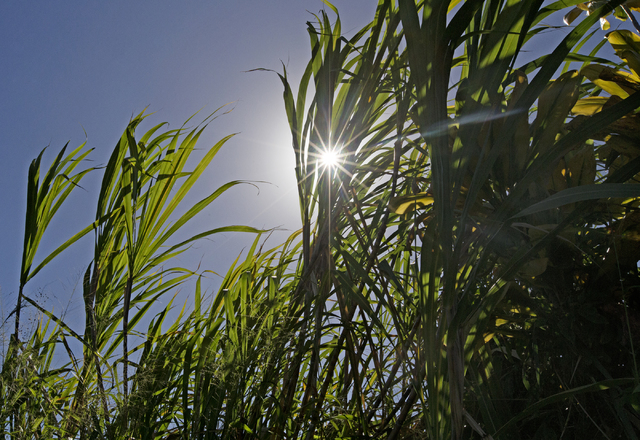The target was set in 2015: by 2045, 100 percent of Hawaii’s energy would come from renewable sources.
The latest stop along that path comes from researchers at the University of Hawaii at Manoa’s College of Tropical Agriculture and Human Resources, who are investigating potential dual contributions of crops used to make biofuel.
“When people think about 100 percent renewable … their minds go to solar, geothermal, wind — and that will play a huge role in the portfolio,” said Susan Crow, assistant professor for CTAHR and co-author of a recently published study in the journal “PLOS ONE.”
But biofuel (ethanol and biodiesel) and biomass also are expected to play a crucial role as Hawaii continues to move toward energy independence.
“Think about days when it’s cloudy and the trades have stopped. Something else has to come in,” Crow said.
“Biofuel crops are an important resource today — and hold great promise for the future — as a sustainable feedstock for renewable fuel production here in Hawaii,” said Bob King, co-founder of Pacific Biodiesel. The Maui-based company produces biodiesel from restaurant food oil waste at its Keaau location.
Pacific Biodiesel also has been working on growing sunflowers as a year-round biofuel crop, with farms on Oahu and the Big Island.
In addition to providing a solution for energy security, King said, biofuel crops also offer a solution to energy storage because they sequester carbon from the atmosphere.
Sugar cane and Napier grass, the two grasses studied by Crow and her co-author, Meghan Pawlowski, are champions of carbon sequestration: their roots are extremely well-equipped to store carbon dioxide in the soil.
They also are highly productive grasses, making both plants good candidates for biomass, which can be burned directly to create energy.
“The Napier grass that we grew — you can harvest it without disturbing the root system,” Crow said. “You harvest it and have high biomass, and you don’t have to touch the roots. That’s the critical aspect.”
Production of biofuels requires a balance. Crow and Pawlowski note that if crop growth and processing is “inappropriately managed,” making the biofuel could end up being a net contributor to greenhouse gas emissions. Plants good at carbon sequestration are therefore better candidates for future cultivation.
On Hawaii Island, certain sugar cane lands that have gone fallow would be prime candidates for areas to grow biofuel crops for the same reason.
“You guys have some amazing volcanic ash soil on the Hamakua Coast,” Crow said. “They (those soils) have an enormous capacity to store carbon.”
The CTAHR study took place on Maui using an experimental plot of land on the HC&S plantation. Crow and Pawlowski could only get four years’ worth of data as a result, since the sugar company closed last year. Their January study comes from the first two years of research.
“We’ll continue analyzing the data,” Crow said. “We can use the four-year data and (start to) develop models.”
It’s not known, for example, if sugar cane and Napier grass are good at long-term sequestration.
Looking ahead, one of the most significant future uses of biofuel is jet fuel.
Last year, United Airlines began using a blend of biofuel and traditional jet fuel for all of its flights traveling between Los Angeles and San Francisco. The blend was expected to yield a 60 percent reduction in greenhouse gases.
“If we generated it here at a reasonable price, that would make a huge difference,” Crow said.
Email Ivy Ashe at iashe@hawaiitribune-herald.com.






